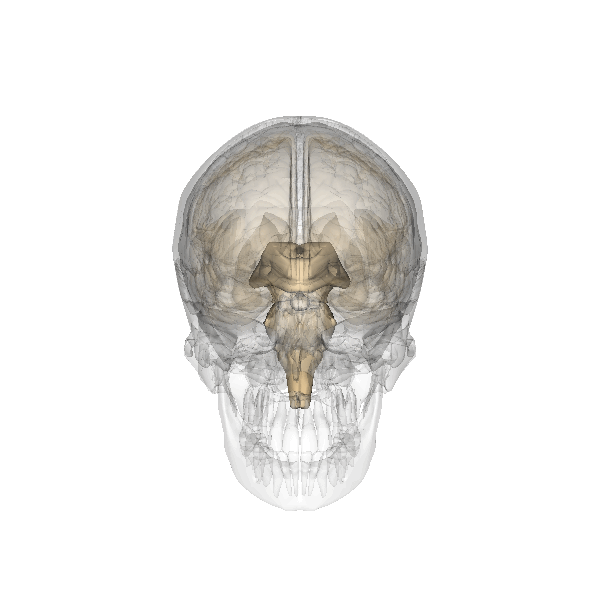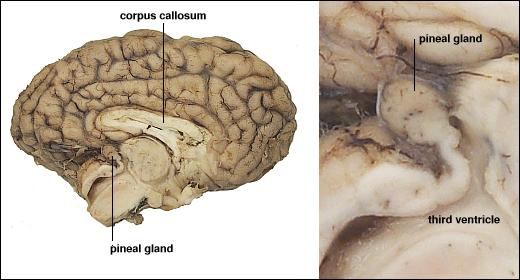2017-02-13 10:17:09
Prelude
Prelude
Today's Topics
- Neurotransmitters
- Quiz 2 on Friday.
- Review Exam 1 on Friday.
The influx of which ion triggers the release of neurotransmitters from the axon terminal?
- Na+
- K+
- Ca++
- Cl-
The influx of which ion triggers the release of neurotransmitters from the axon terminal?
- Na+
- K+
- Ca++
- Cl-
This type of postsynaptic receptor does NOT contain its own ion channel.
- Ionotropic
- Metabotropic
- Ligand-gated
This type of postsynaptic receptor does NOT contain its own ion channel.
- Ionotropic
- Metabotropic
- Ligand-gated
Neurotransmiters
| Family | Neurotansmitter |
|---|---|
| Amino acids | Glutamate (Glu) |
| Gamma aminobutyric acid (GABA) | |
| Glycine | |
| Aspartate |
Glutamate
- Primary excitatory NT in CNS
- Role in learning (via NMDA receptor)
- Transporters on neurons and glia (astrocytes and oligodendrocytes)
- Linked to umami (savory) taste sensation, think monosodium glutamate (MSG)
- Dysregulation in schizophrenia? (Javitt 2010)
Glutamate
| Type | Receptor | Esp Permeable to |
|---|---|---|
| Ionotropic | AMPA | Na+, K+ |
| Kainate | ||
| NMDA | Ca++ | |
| Metabotropic | mGlu |
GABA
- Primary inhibitory NT in CNS
- Excitatory in developing CNS, [Cl-] in >> [Cl-] out
- Binding sites for benzodiazepines (e.g., Valium), barbiturates, ethanol, etc.
| Type | Receptor | Esp Permeable to |
|---|---|---|
| Ionotropic | GABA-A | Cl- |
| Metabotropic | GABA-B | K+ |
GABA

"GABAA-receptor-protein-example" by Chemgirl131 at English Wikipedia - Transferred from
en.wikipedia to Commons by Sreejithk2000 using CommonsHelper.. Licensed under Public Domain via Commons.
Acetylcholine (ACh)
- Primary NT of CNS output
- Somatic nervous system (neuromuscular junction)
- Autonomic nervous system
- Sympathetic branch: preganglionic neuron
- Parasympathetic branch: pre/postganglionic
- Inactivation by acetylcholinesterase (AChE)
ACh anatomy
Acetylcholine
| Type | Receptor | Esp Permeable to | Blocked by |
|---|---|---|---|
| Ionotropic | Nicotinic (nAChR) | Na+, K+ | e.g., Curare |
| Metabotropic | Muscarinic (mAChR) | K+ | e.g., Atropine |
Curare
Atropine
- aka, nightshade or belladonna
How to stop your prey
| Substance | Effect |
|---|---|
| Japanese pufferfish toxin | Blocks voltage-gated Na+ channels |
| Black widow spider venom | Accelerates presynaptic ACh release |
| Botulinum toxin | Prevents ACh vesicles from binding presynaptically |
| Sarin nerve gas | Impedes ACh breakdown by AChE |
| Pesticides | Impede AChE |
| Tetanus toxin | Blocks release of GABA, glycine |
Monoamine neurotransmitters
| Family | Neurotansmitter |
|---|---|
| Monoamines | Dopamine (DA) |
| Norepinephrine (NE)/Noradrenaline (NAd) | |
| Epinephrine (Epi)/Adrenaline (Ad) | |
| Serotonin (5-HT) | |
| Melatonin | |
| Histamine |
Monoamine Song
Monoamine Song
Monoamines, do-do do do-do Monoamines, do do do-do Monoamines, do do do do-do do do-do do do-do do do do do-do do
Monoamine Song
Monoamines, do-pa-mine is one Monoamines, norepi, too Monoamines, sero-tonin e-pinephrine, dop-a- mine, nor-epinephrine, melatonin, whoo!
Monoamine Song
Monoamines, mod-u-late neurons Monoamines, throughout the brain Monoamines, keep people happy, brains snappy, not sleepy, not sappy, do-do do-do do-do do
Monoamine neurotransmitters
| Family | Neurotansmitter |
|---|---|
| Monoamines | Dopamine (DA) |
| Norepinephrine (NE)/Noradrenaline (NAd) | |
| Epinephrine (Epi)/Adrenaline (Ad) | |
| Serotonin (5-HT) | |
| Melatonin | |
| Histamine |
Dopamine
- Released by two pathways
- Substantia nigra -> striatum, meso-striatal projection
- Ventral tegmental area (VTA) -> nucleus accumbens, ventral striatum, hippocampus, amygdala, cortex; meso-limbo-cortical projection
DA pathways
DA Disruption linked to
- Parkinson's Disease (mesostriatal)
- DA agonists treat (agonists facilitate/increase transmission)
- ADHD (mesolimbocortical)
- Schizophrenia (mesolimbocortical)
- DA antagonists treat
- Addiction (mesolimbocortical)
DA Inactivated by
- Dopamine transporter (DAT) and chemical breakdown
http://www.scholarpedia.org/article/Dopamine_anatomy#Dopamine_receptors
Dopamine receptors
| Type | Receptor | Comments |
|---|---|---|
| Metabotropic | D1-like (D1 and D5) | more prevalent |
| D2-like (D2, D3, D4) | target of many antipsychotics |
Norepinephrine
- Released by
- locus coeruleus in pons
- postganglionic sympathetic neurons onto target tissues
- Role in arousal, mood, eating, sexual behavior
NE and monoamine oxidase
- Monoamine oxidase inactivates monoamines in neurons, astrocytes
-
Monoamine oxidase inhibitors (MAOIs) increase NE, DA
- Inhibiting inactivation ~
-(-1) = + 1
- Inhibiting inactivation ~
- Treatment for depression, but have side effects
NE Anatomy
NE receptors
| Type | Receptor | Comments |
|---|---|---|
| Metabotropic | \(\alpha\) (1,2) | antagonists treat anxiety, panic |
| \(\beta\) (1,2,3) | 'beta blockers' in cardiac disease |
Serotonin (5-HT)
- Released by raphe nuclei in brainstem
- Role in mood, sleep, eating, pain, nausea, cognition, memory
- Modulates release of other NTs
- Most of body's 5-HT regulates digestion
5-HT anatomy
5-HT receptors
- Seven families (5-HT 1-7) with 14 types
- All but one metabotropic
5-HT clinical significance
- Ecstasy (MDMA) disturbs serotonin
- So does LSD
- Fluoxetine (Prozac)
- Selective Serotonin Reuptake Inhibitor (SSRI)
- Inhibits reuptake -> increases extracellular concentration
- Treats depression, panic, eating disorders, others
- 5-HT3 receptor antagonists are anti-mimetics used in treating nausea
Melatonin
- Released by pineal gland into bloodstream
Pineal gland

By Images are generated by Life Science Databases(LSDB). - from Anatomography, website maintained by Life Science Databases(LSDB). You can get this image through URL below. 次のアドレスからこのファイルで使用している画像を取得できます URL., CC BY-SA 2.1 jp, https://commons.wikimedia.org/w/index.php?curid=7855244
Histamine
- In brain, released by hypothalamus, projects to whole brain
- Metabotropic receptors
- Role in arousal/sleep regulation
- In body, part of immune response
Other NTs
- Gases
- Nitric Oxide (NO), carbon monoxide (CO)
- Neuropeptides
- Substance P and endorphins (endogenous morphine-like compounds) have role in pain
- Orexin/hypocretin, project from lateral hypothalamus across brain, regulate appetite, arousal
Other NTs
- Neuropeptides (continued)
- Cholecystokinin (CCK) stimulates digestion
- Oxytocin and vasopressin released by posterior hypothalamus onto posterior pituitary, regulate social behavior
Non-chemical communication between neurons
- Gap junctions
- Electrical coupling
- Connect cytoplasm directly
- Fast, but fixed, hard to modulate
- Examples, retina, cardiac muscle
Gap junctions
Ways to think about synaptic communication
- Specificity: point-to-point vs. broadcast
- Direct vs. modulatory
- Agonists vs. antagonists
Agonists vs. Antagonists
- Agonists
- bind to receptor
- mimic action of endogenous chemical
- Antagonists
- bind to receptor
- block/impede action of endogenous chemical
Valium is a GABA-A receptor agonist. This means:
- It decreases inhibition
- It activates a metabotropic Cl- channel
- It facilitates/increases inhibition
- It blocks an ionotropic channel
Valium is a GABA-A receptor agonist. This means:
- It decreases inhibition
- It activates a metabotropic Cl- channel
- It facilitates/increases inhibition
- It blocks an ionotropic channel
Next time…
- Hormones
References
Javitt, Daniel C. 2010. “Glutamatergic Theories of Schizophrenia.” Israel Journal of Psychiatry and Related Sciences 47 (1): 4.






